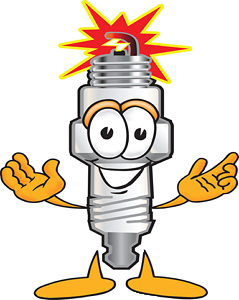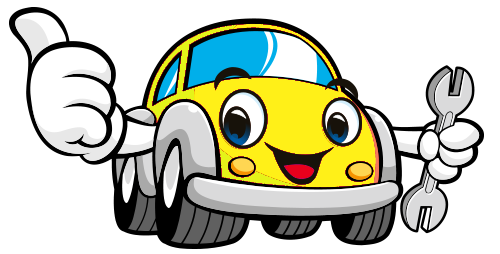

Mobile users:
For best results, view in Landscape mode.

The end of the traditional tuneup was around the
1999 model year.
The traditional car tune-up is no longer applicable to today's cars,
that doesn’t mean there isn’t a modern version of the tune-up.
Tune-ups on today's cars are commonly called Routine or
Scheduled Maintenance.
Today's fuel-injected vehicles do not require tune-ups in the
traditional sense, modern cars still need a certain amount
of regular maintenance that could fall into the tune-up
category.
A car tune-up is a type of preventive maintenance performed
on a vehicle to ensure it continues to perform well.
Replacing your car’s air engine filter annually is one of the
easiest car tune-up tasks, and it can make your engine
run noticeably better.
The engine air filter prevents debris from entering your engine,
but over time it can become clogged.
Replacing it will allow air to flow freely into the engine.
Check your owner’s manual on what kind of filter your car takes
and how to change it or ask for the information at your
auto parts store.
Spark plugs are responsible for igniting the fuel that your engine
needs to run.
The number of spark plugs in your car's engine is usually the
same as the number of cylinders.
Some car manufactures will use 2 spark plugs per cylinder.
In today's cars, electronic ignition and fuel injection systems eliminated
the "traditional" tune-up practices of adjusting carburetors,
installing points, and setting the timing.
Most or today's cars don't have distributors or distributor caps.
Distributors were pretty much phased out by 2008.
Today's engines use individual coil packs instead of distributors.
The ignition is triggered by toothed timing wheels spinning with
the crankshaft, which is much more accurate than points.
There are individual coils for each cylinder, fired by the
engine computer called the electronic control unit ( ECU ).
Many newer cars do not have spark plug wires; they have
“coil-on-plug” (COP) ignition systems.
The coil-on-plug system eliminates the need for high voltage
spark plug wires that can cause ignition problems over time.
An ignition coil, also known as a spark coil, is an induction coil
in your car's ignition system which transforms the battery's
low voltage into thousands of volts which are needed to create
an electric spark in the spark plugs to ignite the fuel.
An ignition coil is essentially a transformer that turns the 12-volt
signal from the ignition amplifier to the 20,000 to 30,000 volts
needed to arc across the plug.
In older cars, a single ignition coil is connected to a distributor cap
with a fat plug wire.
Individual wires then connect the cap to each spark plug.
As the engine rotates, the distributor spins around, opening and
closing the points that trigger the spark.
The rotor inside the cap distributes the spark in round-robin fashion
to each plug.
On today's cars, the coil-on plugs, also called stick coils, snapped onto
the tops of spark plugs, with not even a plug wire between them.
The stick coils and plugs are typically hidden inside the engine under
a plastic cover that looks like the top of a Shop-Vac.
When components of your ignition system fail, the “check engine”
light may come on.
Your mechanic will be able to plug a computer into your car to look for
a “code” that will tell them what needs to be replaced.
Replace your spark plugs anywhere between 30,000 miles and 100,000
miles depending on manufacturer and vehicle.
The only reason to replace plugs more often than recommended is if the
engine is hard to start, idles roughly, hesitates, misfires, uses more fuel
than usual or if the check engine light comes on.
Manufacturers use different kinds of spark plugs, check your owner’s
manual for what kind your vehicle takes and how often to change
them.
Or have your mechanic check if / when the spark plugs
need to be be replaced.
With regular preventative maintenance, you can still improve the
performance and fuel efficiency of your car.
It's recommended to have routine maintenance completed about
every 30,000 miles or as recommended by your
car's owner's manual.
Fuel filters may also need to be replaced during a tune-up.
Like your air filter, the fuel filter keeps dirt and contaminants that
may be in your fuel system from reaching sensitive components
like fuel injectors, where they could affect engine performance.
Check your owner's manual or ask your mechanic for recommendation
on when the fuel filter should be replaced.
If your drive belt (serpentine belt) hasn't been changed in a
while, it may be recommended to be replaced during
a tune-up.
If your car has a timing belt, it is often replaced during a tune-up.
If your car has a timing belt, it may be included in the maintenance
schedule.
If your car uses a timing chain rather than a belt, you should still ask
your mechanic to inspect it, as the links in
the chain can stretch.
Many car owners spend don't spend much time preparing for
a scheduled maintenance visit to the dealership.
They just agree to the recommendation of the service advisor.
This can be an expensive mistake.
For example:
Your owner's manual says that the automatic transmission fluid
doesn't have to be changed until 80,000 miles, but the service
advisor says it's best to change it at 30,000 miles.
Keep in mind that the service person at a dealership gets a
commission for all the parts and services done on your car.
Check your owner's manual.
The routine maintenance at certain mileage intervals are described
in your owner's manual.
Belts and hoses, windshield wiper blades, tires, etc.
will wear out at irregular intervals.
These and other stuff will need to be checked periodically, either
by your mechanic or by your own inspection.
Today's cars are equipped with computer-controlled systems
that some car owners find intimidating, so they put off
preventative maintenance until something goes wrong.
You can save yourself some time and money by some DIYers.
You don't need to be a mechanic to perform basic maintenance
on your car.
For DIY Tune-Up / Preventive Maintenance

